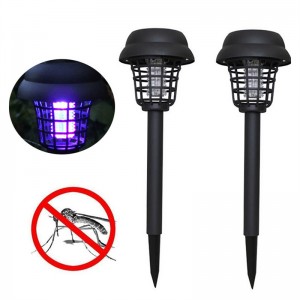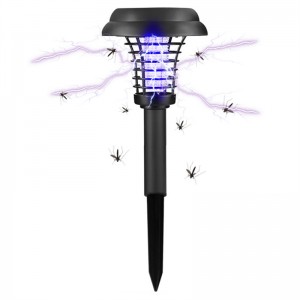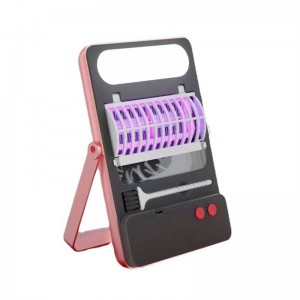Additionally, it is important to place the shockers away from areas frequented by humans to minimize the risk of accidental contact. For your safety, please avoid touching the anti-shock device during use, otherwise it may cause slight electric shock. Finally, during rainy or stormy weather, it is advisable to disconnect the shocker from power to avoid any potential damage. By following these guidelines, you can effectively use the solar powered bug zapper to help control and reduce the appearance of bugs in desired areas.
-

Solar Bug Zapper Outdoor Waterproof UV LED Solar Powered Mosquito Killer Lamp for Garden Yard and Indoor
Product Name: solar bug zappers
Model number: YC-CP005
Power source: Solar Powered
Solar Panel: 2V/40mA
Waterproof rating: IP65
Battery: 1pcs AAA 1.2v Ni-CD 200MAH
LED : 2pcs LED
Charging time: 6-8 hours
Working time: 8-10 hours
Material: PP, PS
Size: 60PCS/CTN, 9KG, 50.5*40.2*36.5 CM
OEM: Yes
Packaging: Color Box
-

Solar Bug Zapper LED Mosquito Killer Outdoor Solar Powered Zapper Light Lamp for Indoor and Outdoor
Product Name: solar bug zappers
Model number: YC-CP013
Power source: Solar Powered
Solar Panel: 4V
Battery: 1pcs AAA 1.2v 600MAH
LED : 2pcs LED
Charging time: 6-8 hours
Working time: 8-10 hours
Material: ABS, PS
-

Outdoor Mosquito Repellent Lamp Waterproof Electric Shock Insect Repellent Repellent With Solar Camping Lamp
Product Name: Mosquito Repellent Lamp
Model number: YC-CP020
Power source: Solar Powered or USB Rechargeable
Solar Panel: 4V
Battery: 1200MAH
LED : 12pcs UV LED, 44PCS White LED
Charging time: Solar: 6-8 hours, USB: 2.5H
Working time: 8-10 hours
Material: ABS, Aluminum alloy
MOQ: 200pcs
OEM: Yes
Packaging: Color Box
-

Solar Bug Zapper Outdoor Waterproof UV LED Solar Powered Mosquito Killer Lamp for Garden Yard and Indoor
Product Name: solar bug zappers
Model number: YC-CP005
Power source: Solar Powered
Solar Panel: 2V/40mA
Waterproof rating: IP65
Battery: 1pcs AAA 1.2v Ni-CD 200MAH
LED : 2pcs LED
Charging time: 6-8 hours
Working time: 8-10 hours
Material: PP, PS
Size: 60PCS/CTN, 9KG, 50.5*40.2*36.5 CM
OEM: Yes
Packaging: Color Box
Warranty: 1 year




